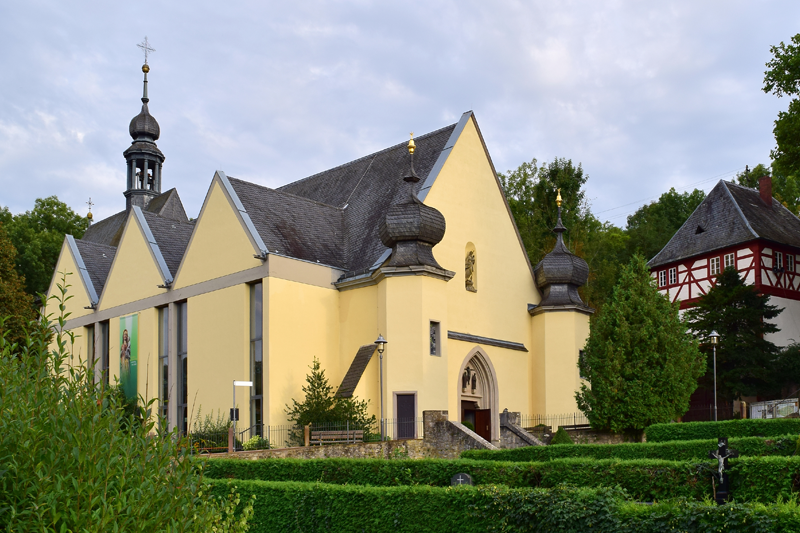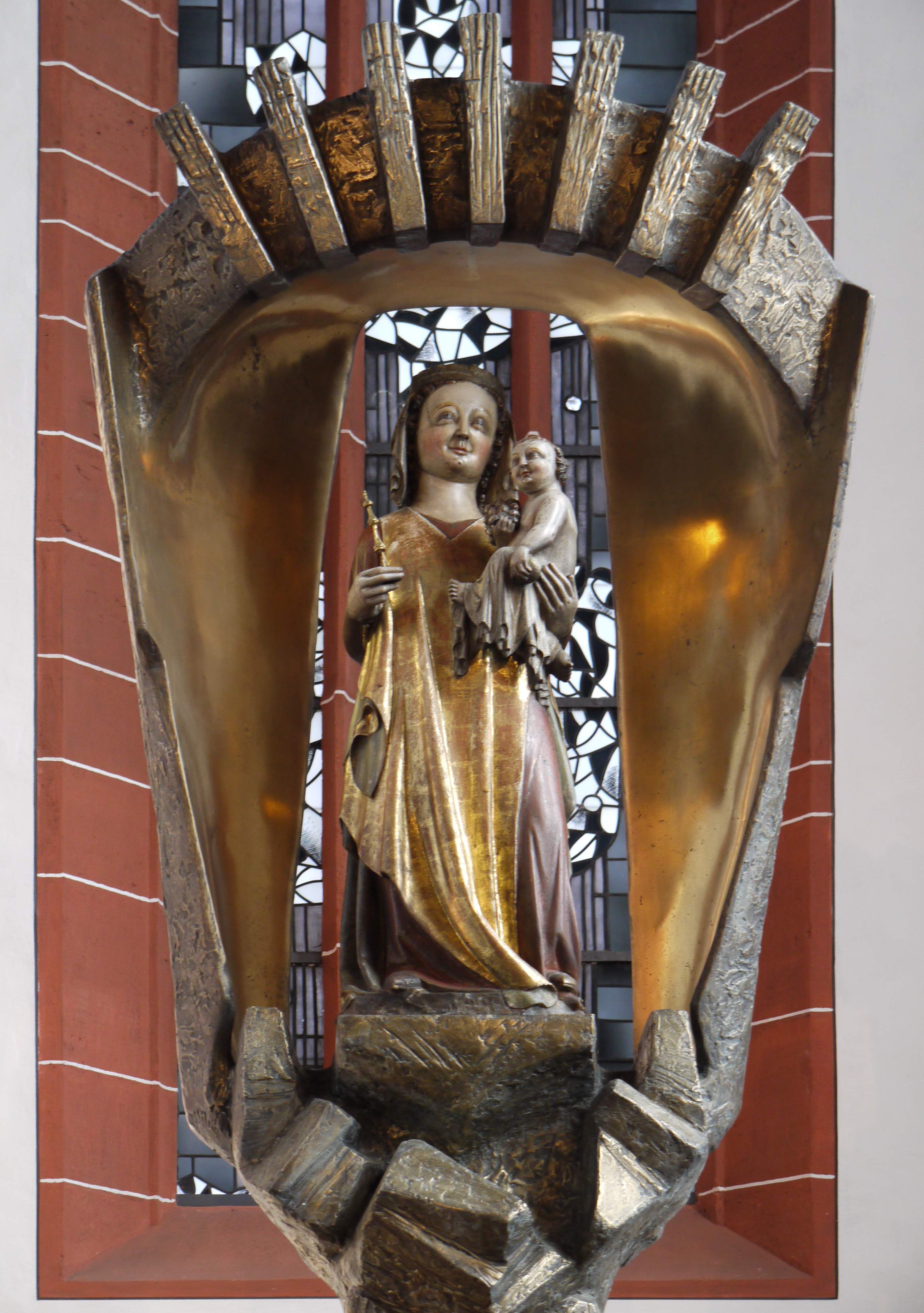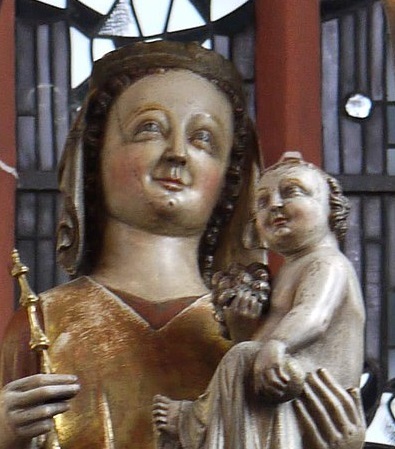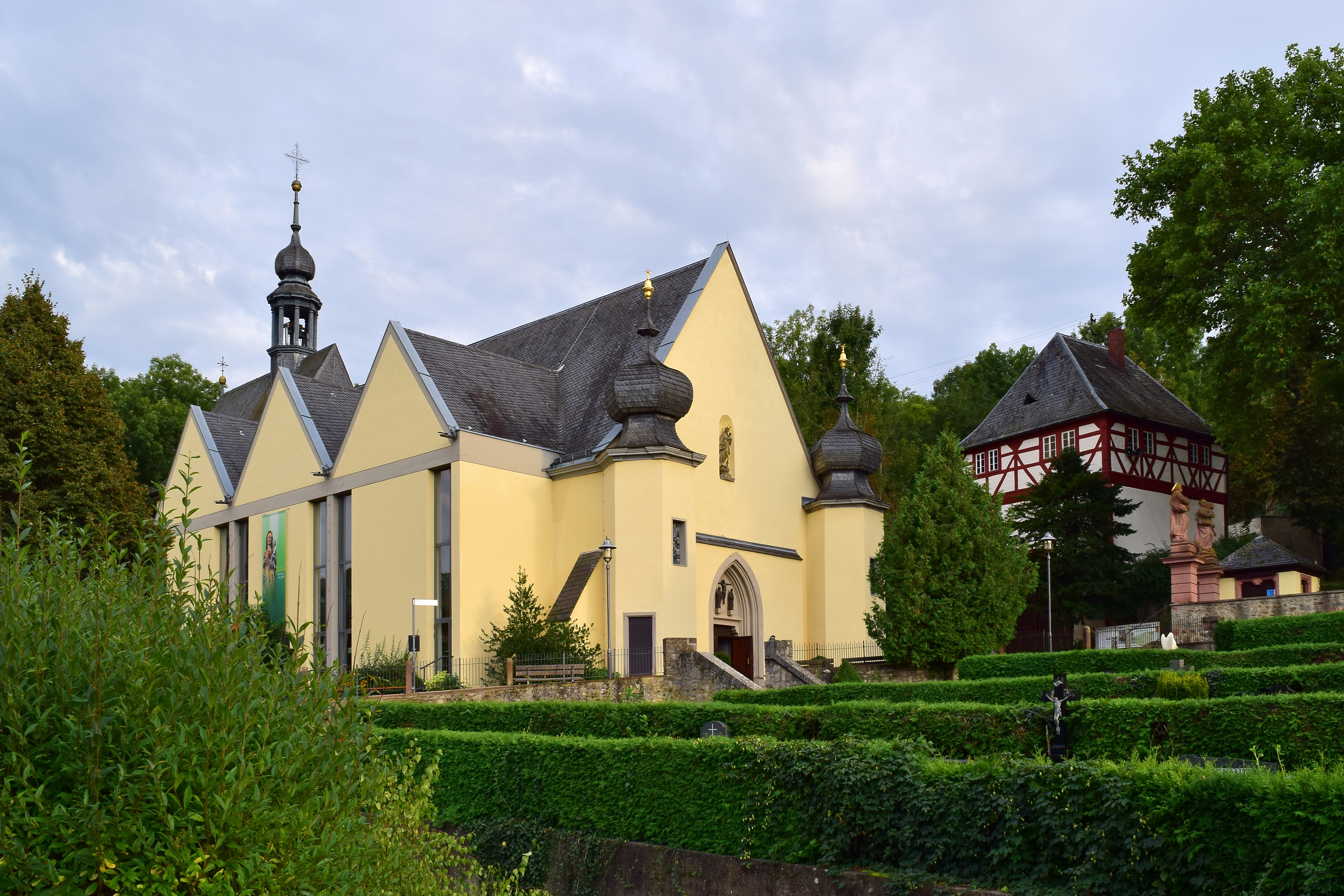Blogs

German Pilgrimage Goes Online for Trio of Marian Feasts
By Joan Milligan
Wo murmelnd zieht ein Bächlein durchs Tal sein silbern Band,
da liegt eine alte Kirche am grünen Wiesenrand …
Where a brook murmurs a silver ribbon through the valley,
lies an old church on the edge of the green meadow…
— from a 19th-century pilgrimage song by pastor Karl Sauer
September is traditionally a bustling time for pilgrimages to the church Maria im Grünen Tal (Mary in the Green Valley) in the small German town of Retzbach. Joyful pilgrims have been making trips together since the 13th century. The town sits amid gently sloping meadows and forests along the river Main, about 65 miles southeast of Frankfurt in Bavaria. This year, due to the COVID-19 pandemic, pilgrims must instead make solitary visits. It is also possible to attend Mass virtually, and although you won’t be able to enjoy Pfeffernüsse, the locally made spicy cookies customarily sold in front of the church, it is likely you will hear a bit of the parish brass band (details below).
Pilgrims visit the cheerful yellow Wallfahrtskirche, or “pilgrimage church,” throughout the year, but the September commemorations are the most popular. These include the feast of Mary’s birth (Sept. 8), the Names of Mary (Sept. 12) and the Sorrows of the Virgin (Sept. 15), all observed during the first three weekends of the month.
Greeting pilgrims at the altar is a statue of the Gnadenmadonna, Mother of Mercy. She is known as the lächelndes Muttergottes, or “smiling Mother of God,” with a dimple in her chin and the child Jesus in her arms. With a delighted and mischievous look, Jesus holds a bunch of grapes in his hand, no doubt plucked from one of the many vineyards nearby. Many legends about this 4-foot-tall sandstone statue, dating from around 1300, attempt to explain its origin. One story is that the statue was buried in the nearby forest, unearthed by the Lords of Thüngen, who were looking for a rabbit that disappeared into a hole. In the back of the figure, hidden for centuries, are relics. These bits of cloth and bone, presumably from the Holy Land, were not discovered until 1979.
Behind the church is a Marienbrünnchen, a natural spring whose water is said to have healing properties.
Many of the pilgrims are local and make the journey to Maria im Grünen Tal by foot year after year. Originating in the town of Rieneck, to the north, in 1470, the Green Valley pilgrimage is one of the oldest in the Retzbach region. The 20-mile hike begins at 7 a.m. with a stop for lunch at the music hall in Gambach. As the pilgrims continue, neighbors from Sinngrund, the Saale valley and the Main valley join in, adding to the numbers. They reach Retzbach around 5 p.m. After Mass, pilgrims carry candle-lit lanterns through the streets in a Lichterprozession, or “procession of lights.”
The church’s original architecture was Gothic, but through the centuries, parts of the church have, of course, been taken down, moved or rebuilt. In the 17th century, the church’s baroque towers with onion domes were added. Zwiebelturm (literally “onion towers”) are popular throughout Bavaria. When the nave collapsed in a thunderstorm one night in 1969, it was rebuilt at twice the size, and the Madonna sculpture moved onto a dramatic 16-foot bronze platform by the Würzburg sculptor Otto Sonnleitner. The interior is painted in a simple white, in a stunning contrast to the ribs of the vaulted ceiling.
Nearby, an opportunity for contemplation in nature can be found in an 8-mile reflection path that follows the valley of the small Retz River, which empties into the Main at Retzbach. Along the way, markers make people aware of the proportionality from the time of the creation of Earth to the time of the creation of humans.
Tune in
Live streaming of the Saturday evening pilgrimage Mass at Maria im Grünen Tal takes place at 1 p.m. Eastern time (7 p.m. in Rezbach) Sept, 5, 12 and 19. To view it, see the Pfarrei Retzbach channel on YouTube; the site can send a reminder when it’s live.
— Joan Milligan is the Special Collections cataloger at the University of Dayton Libraries.



